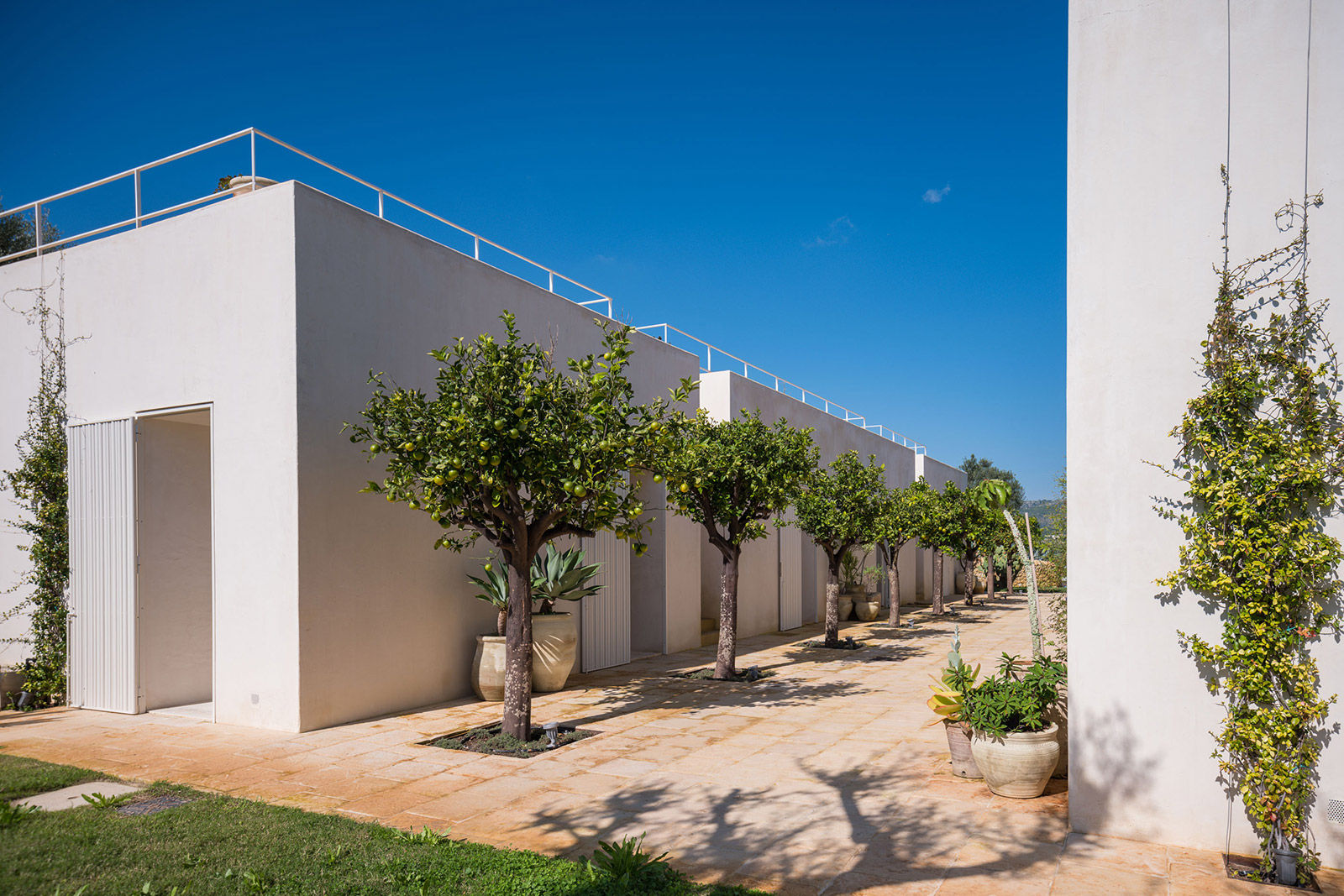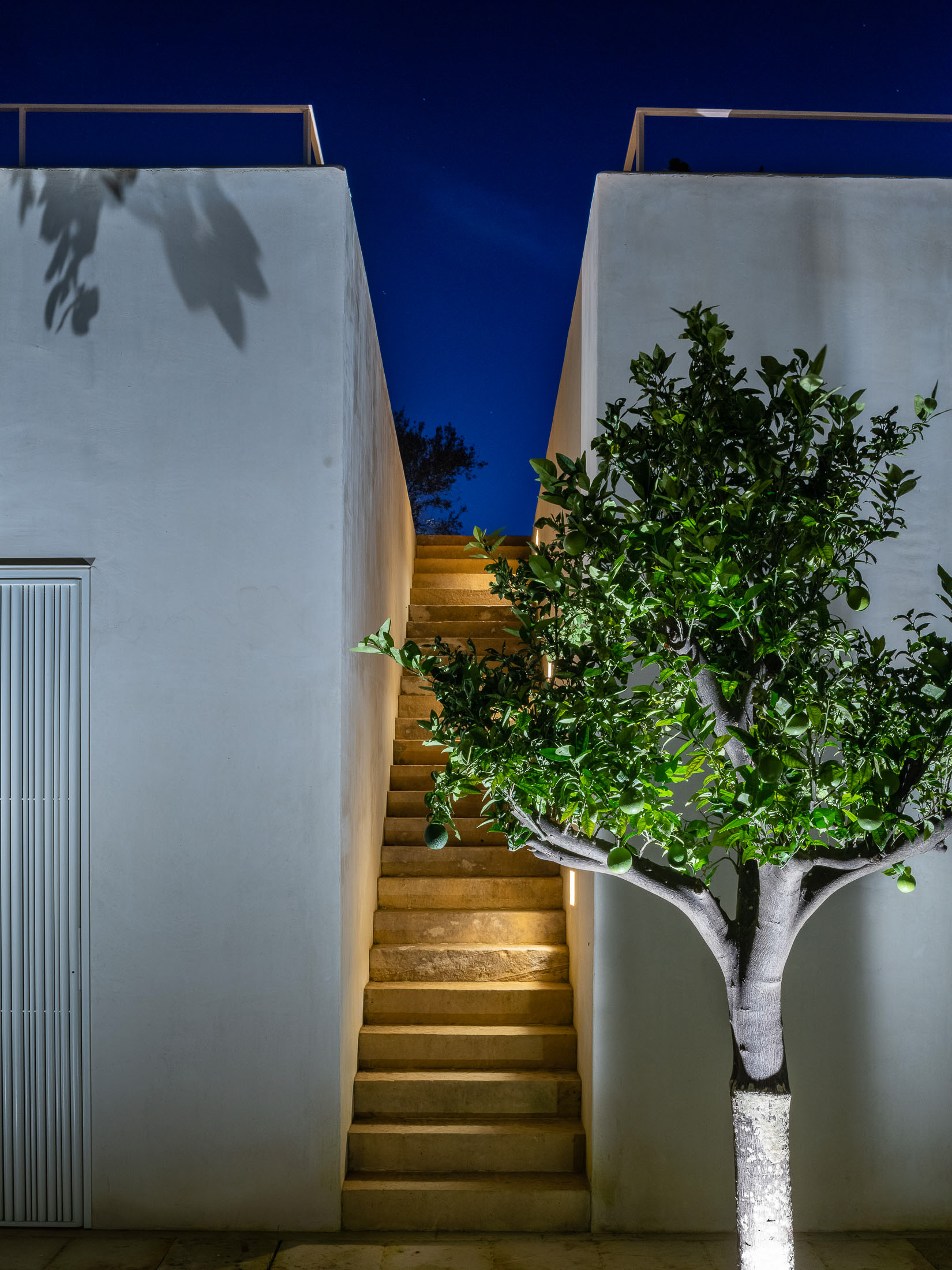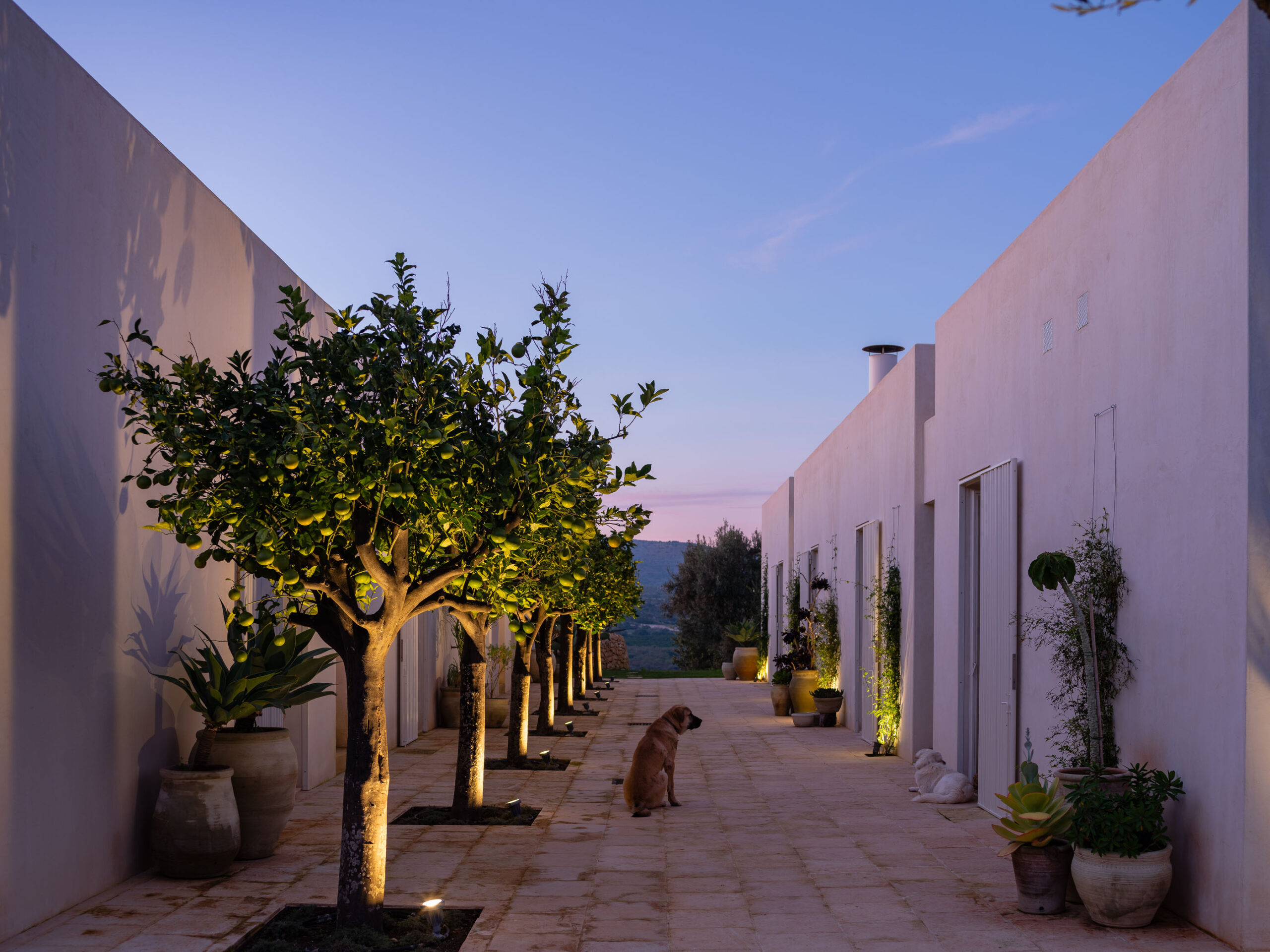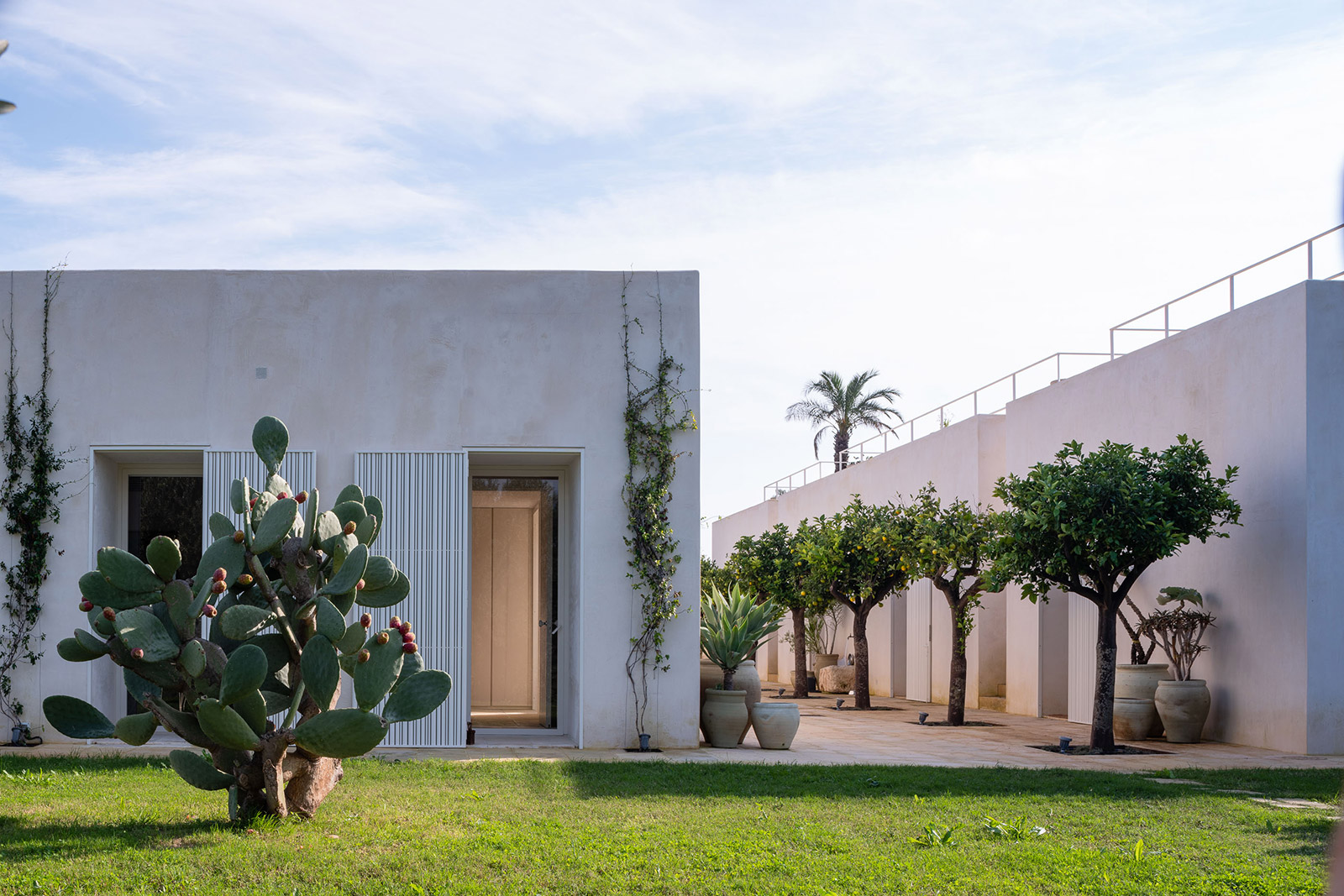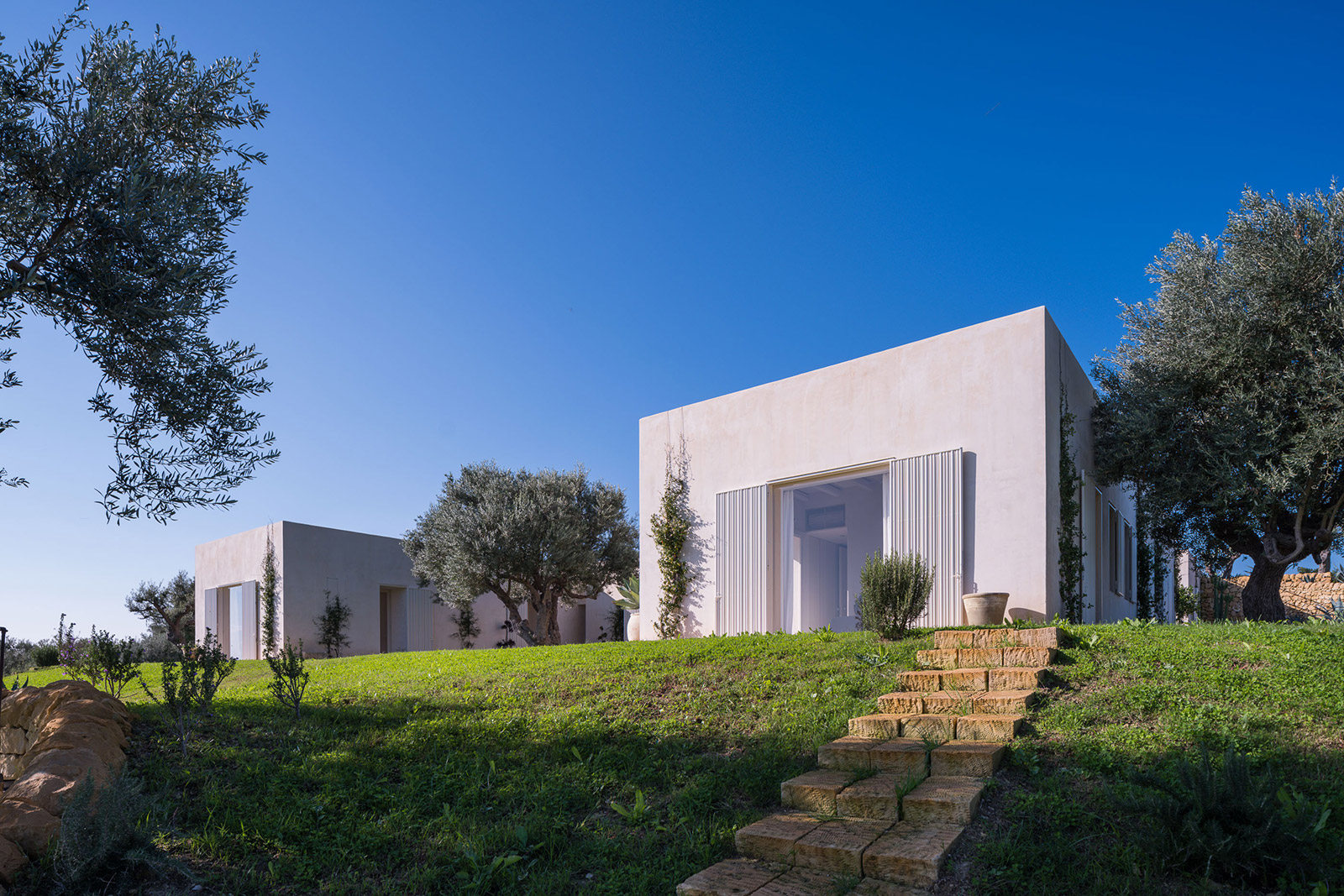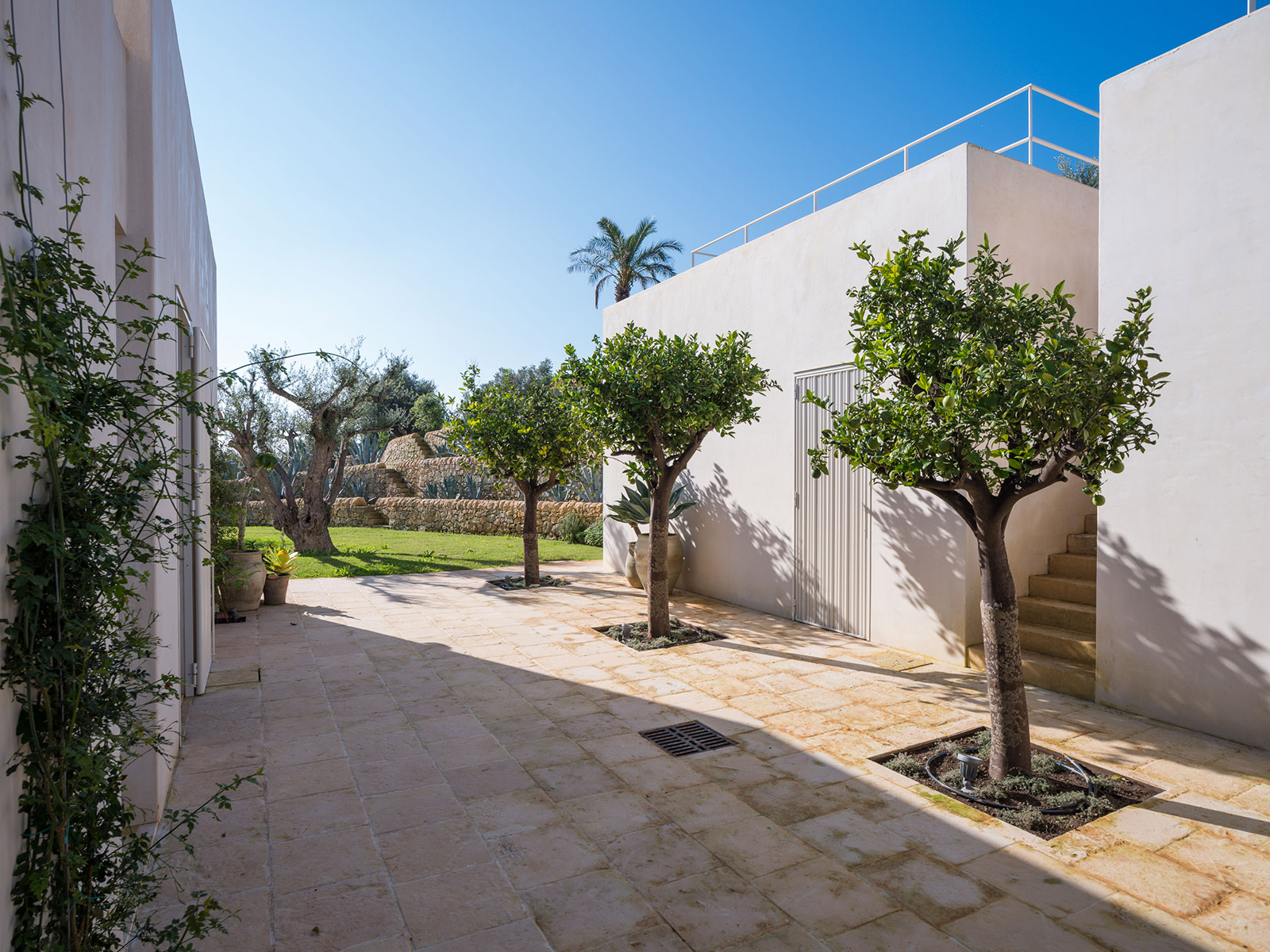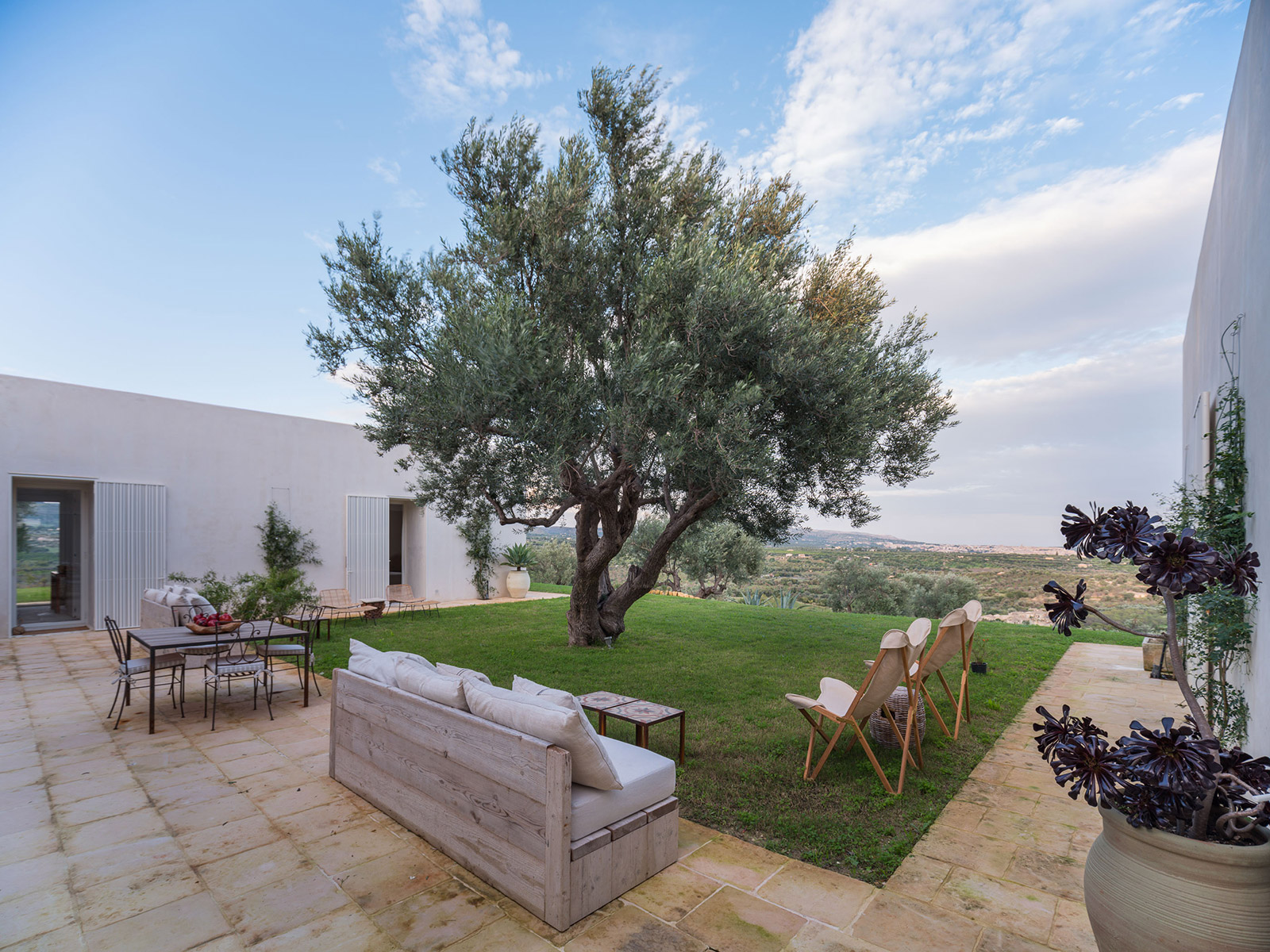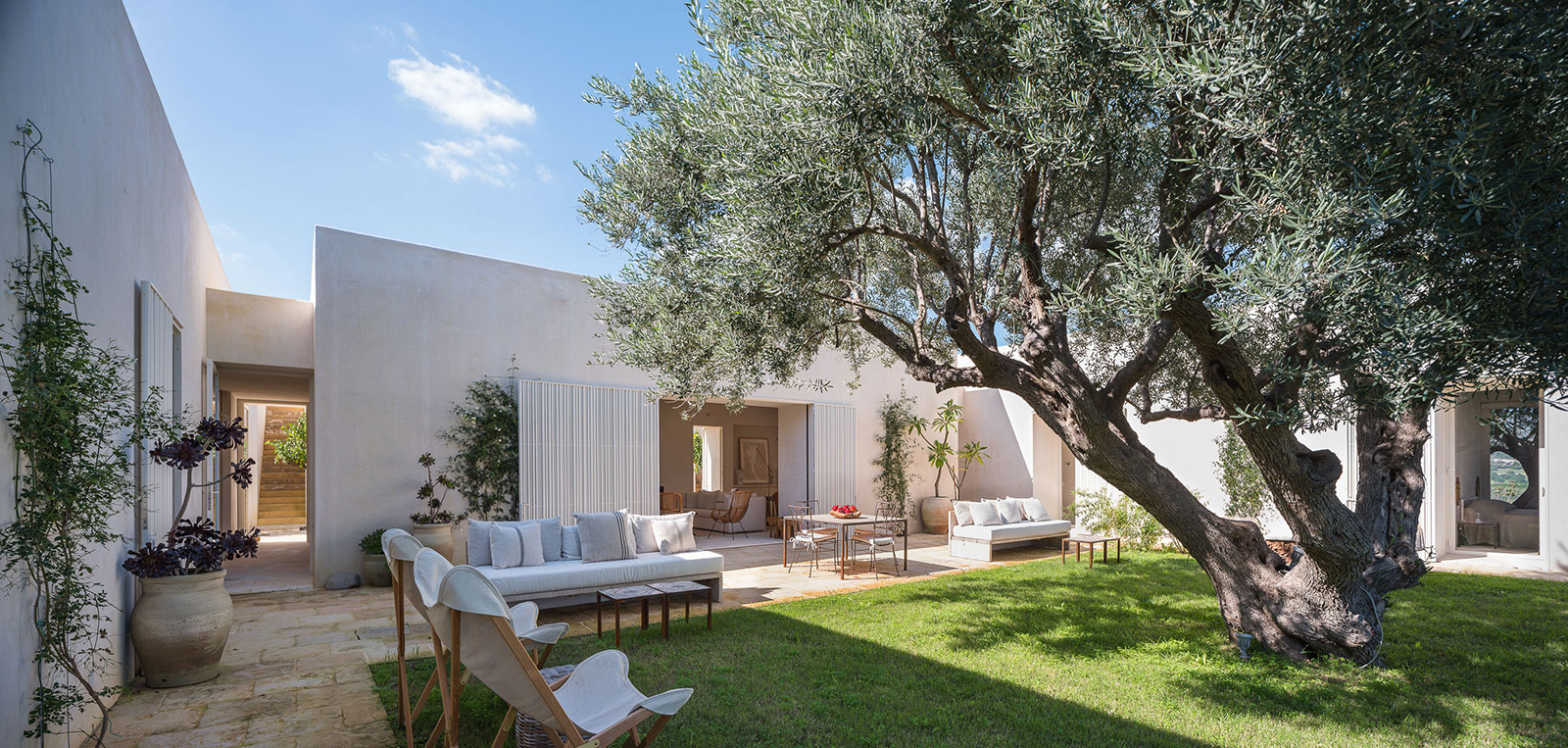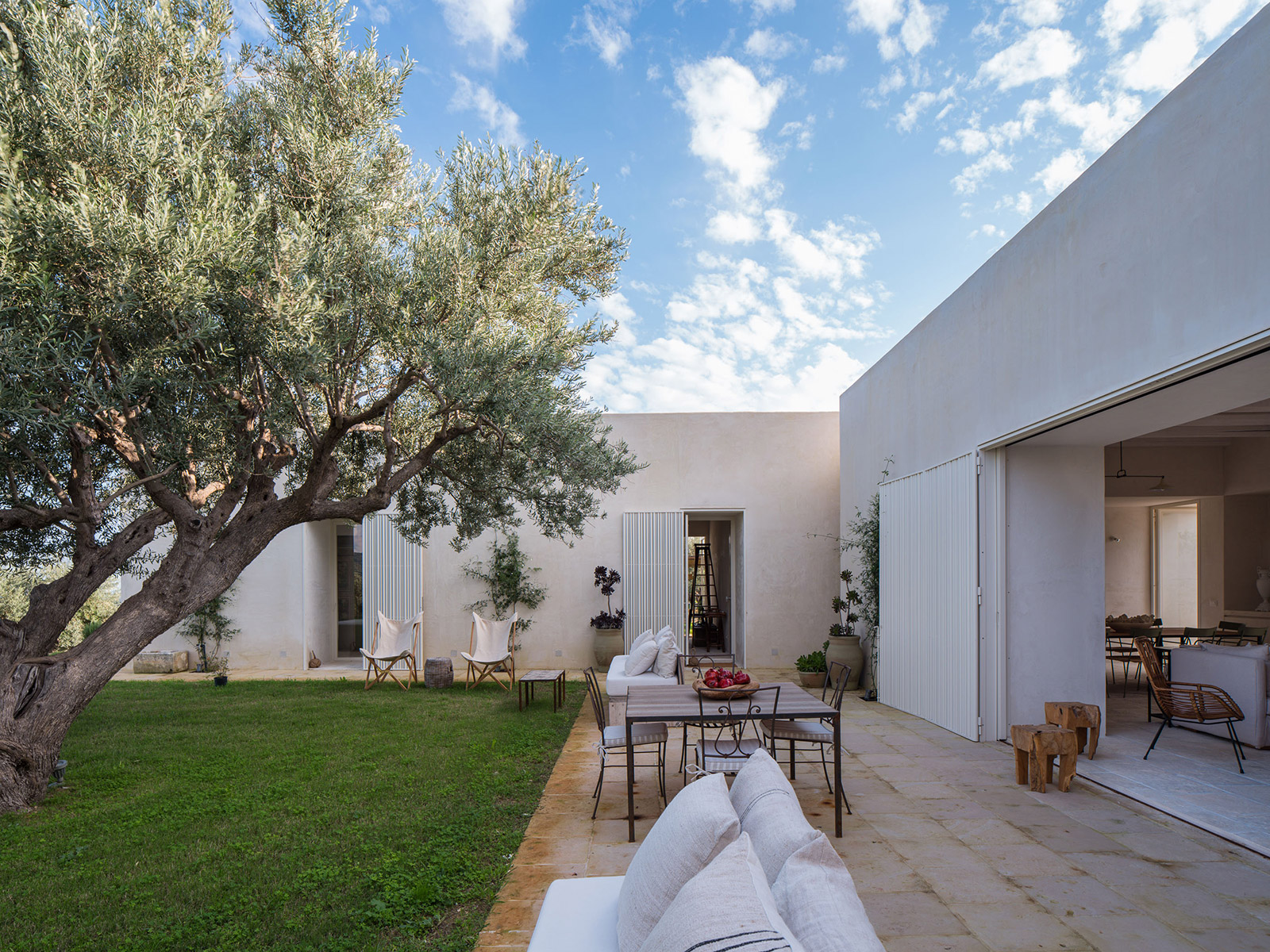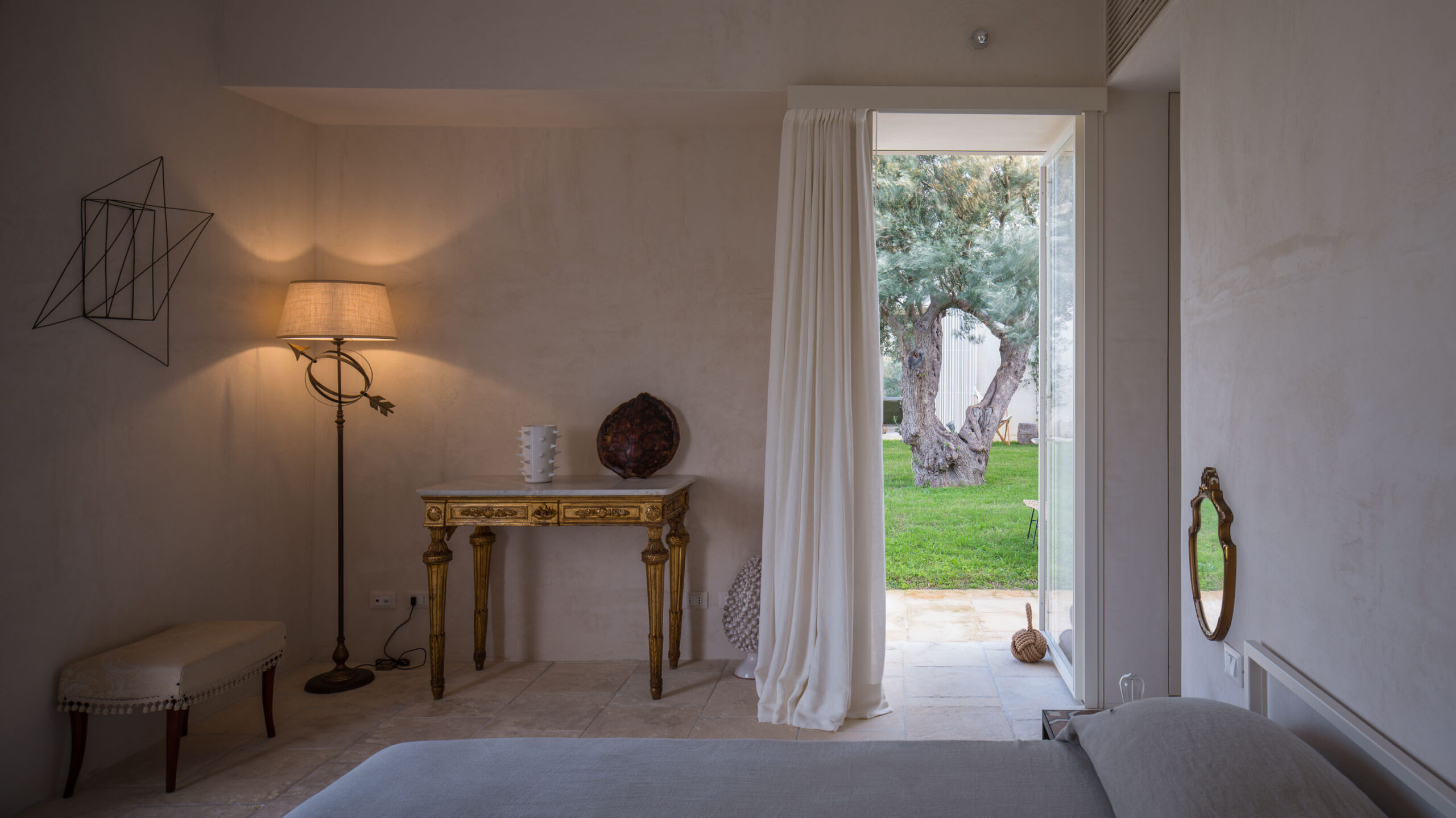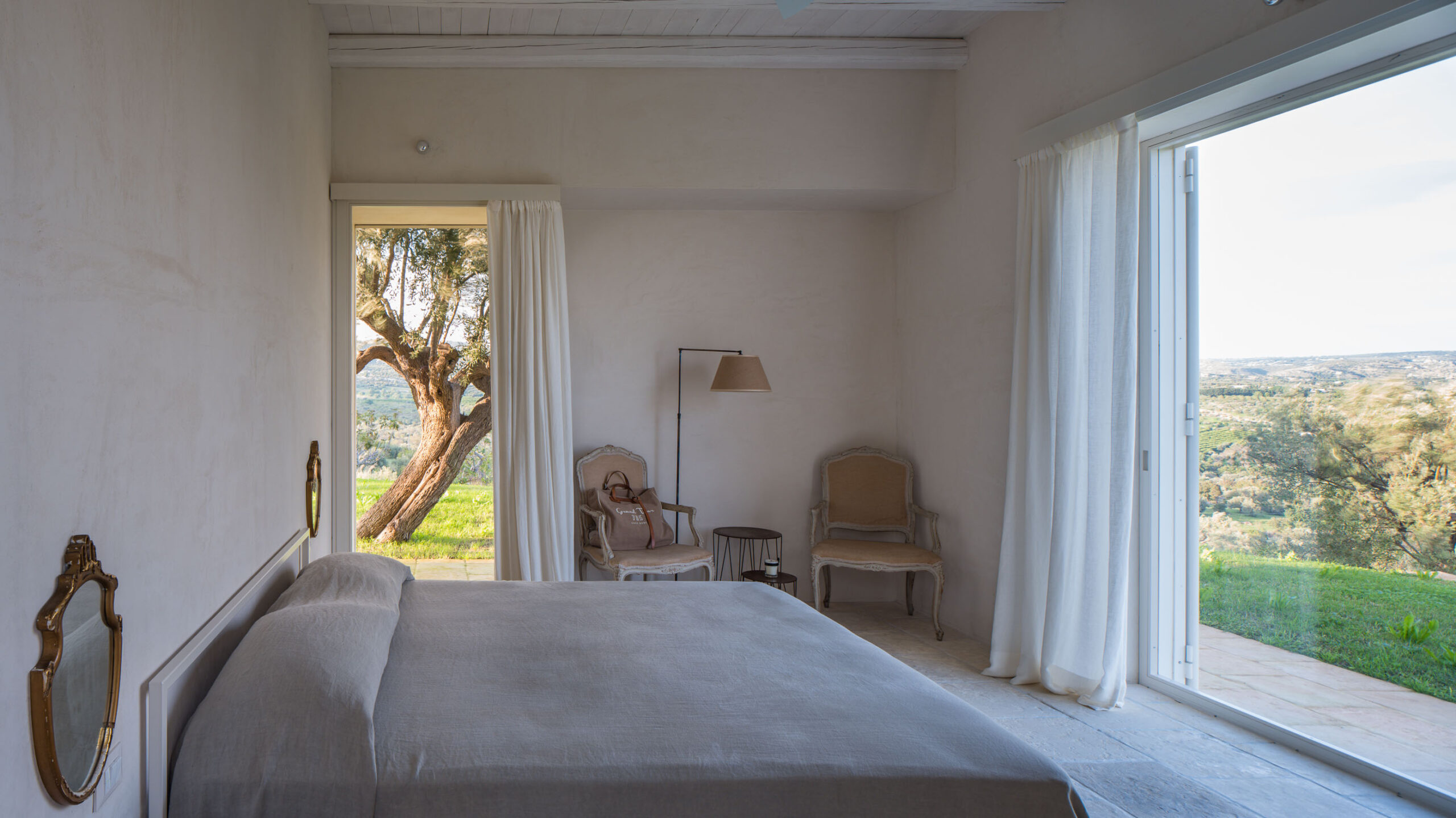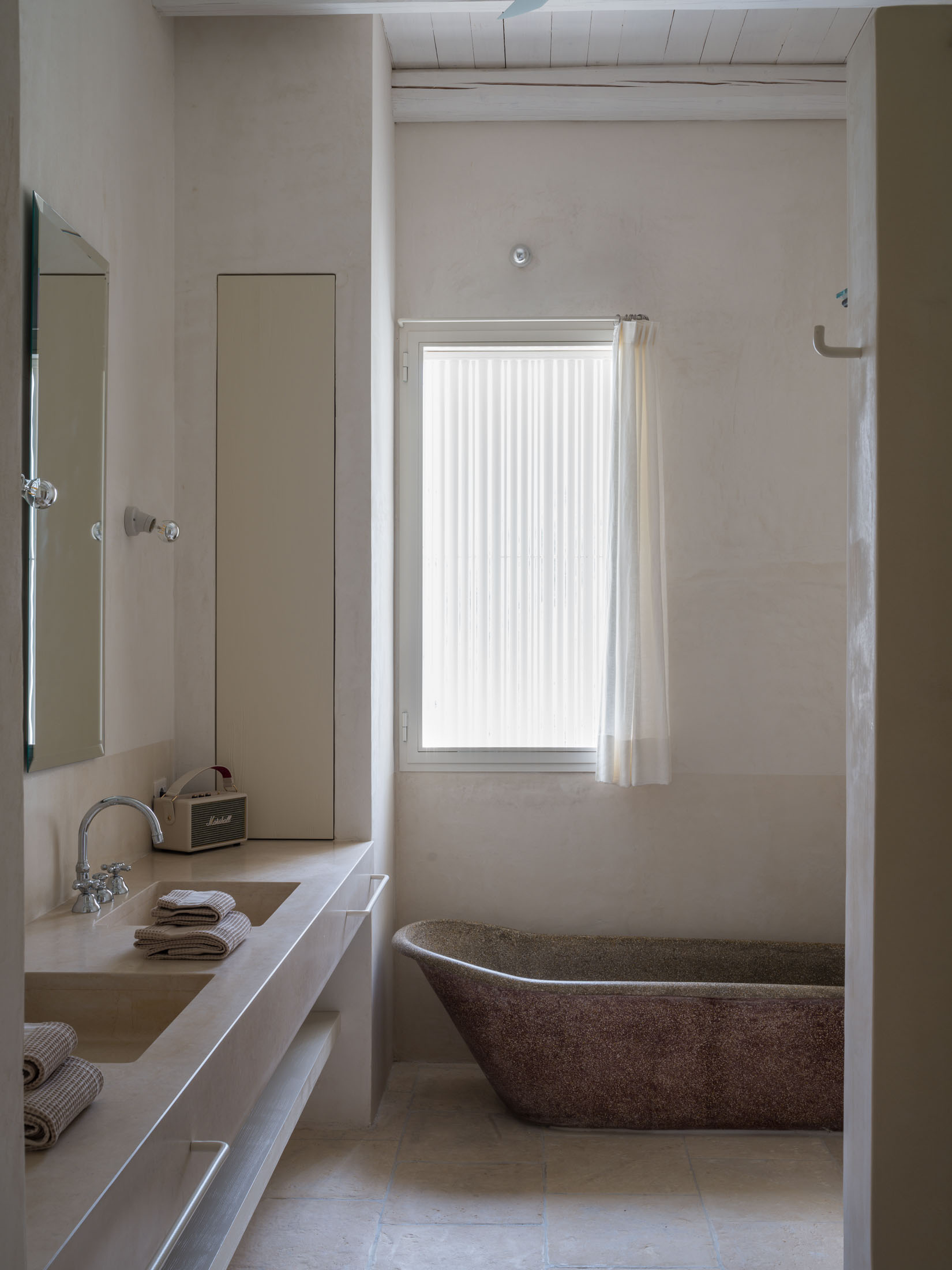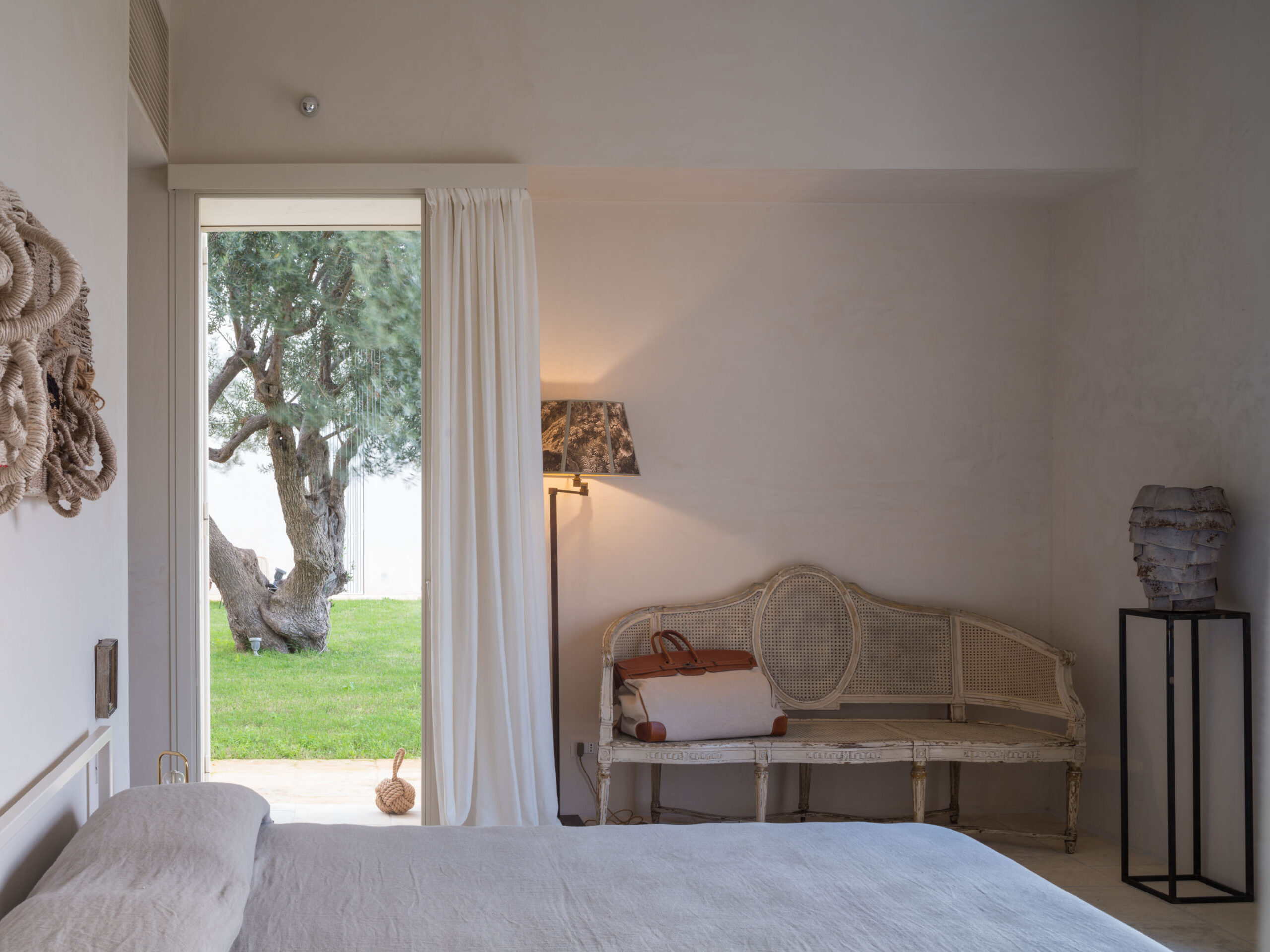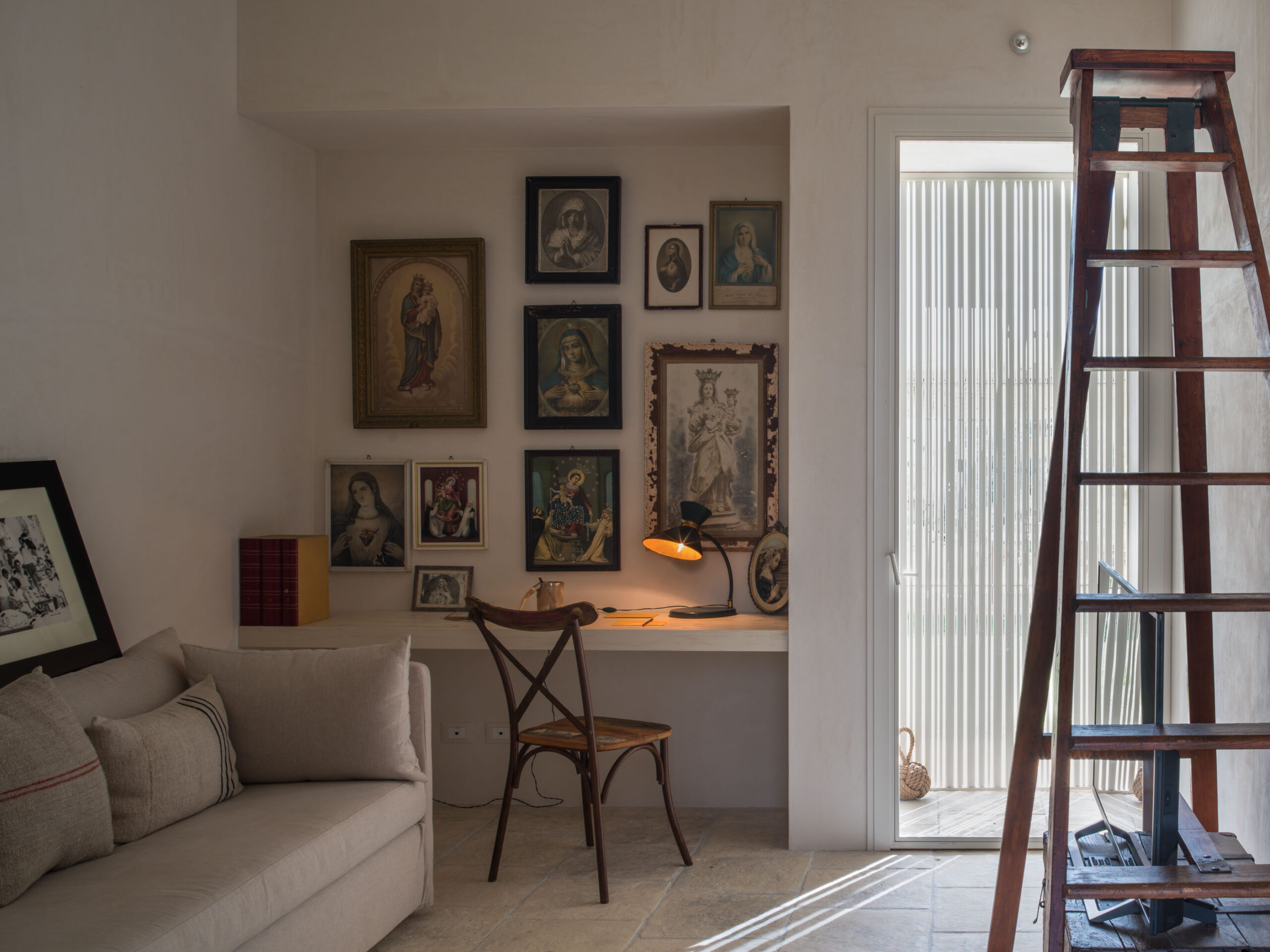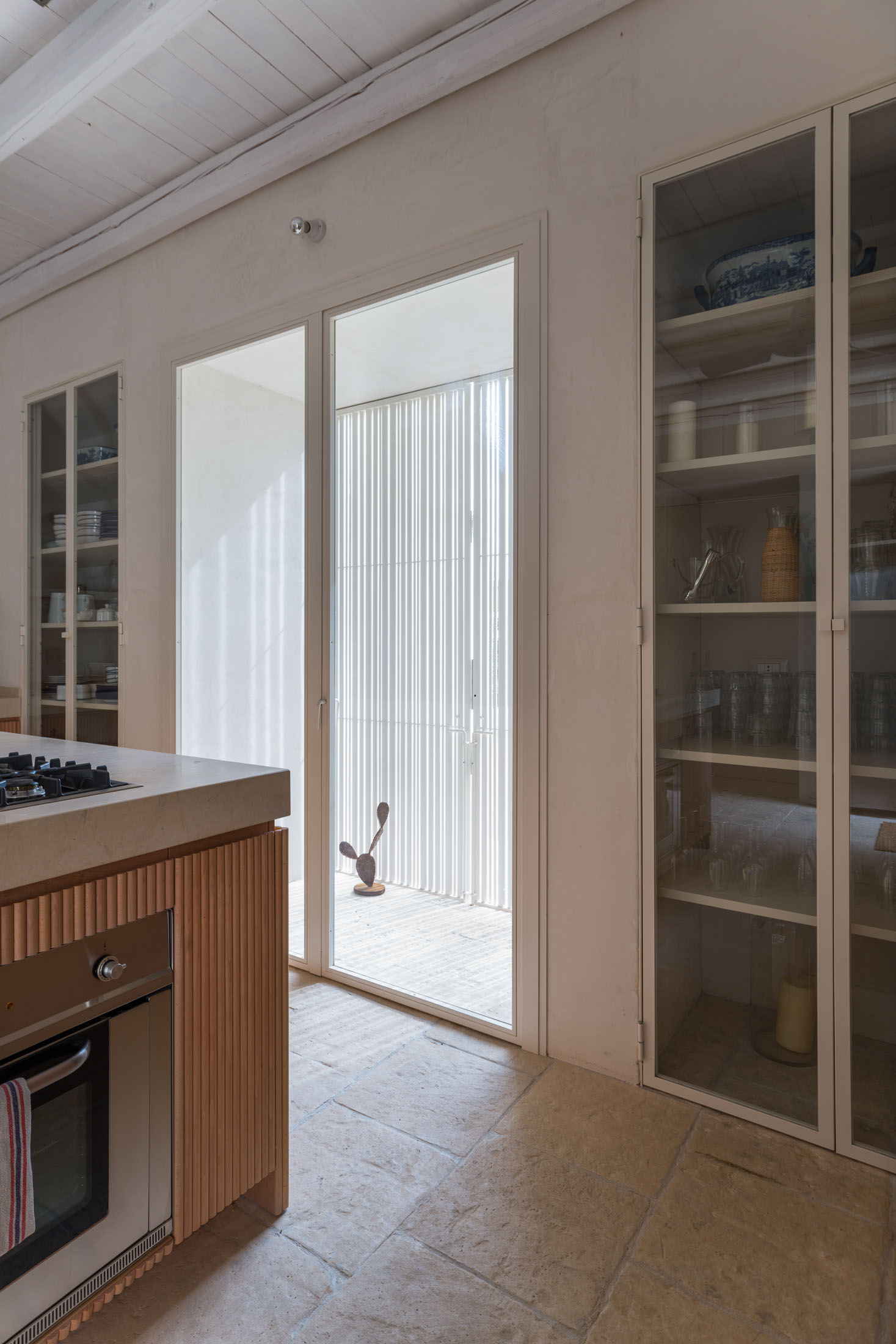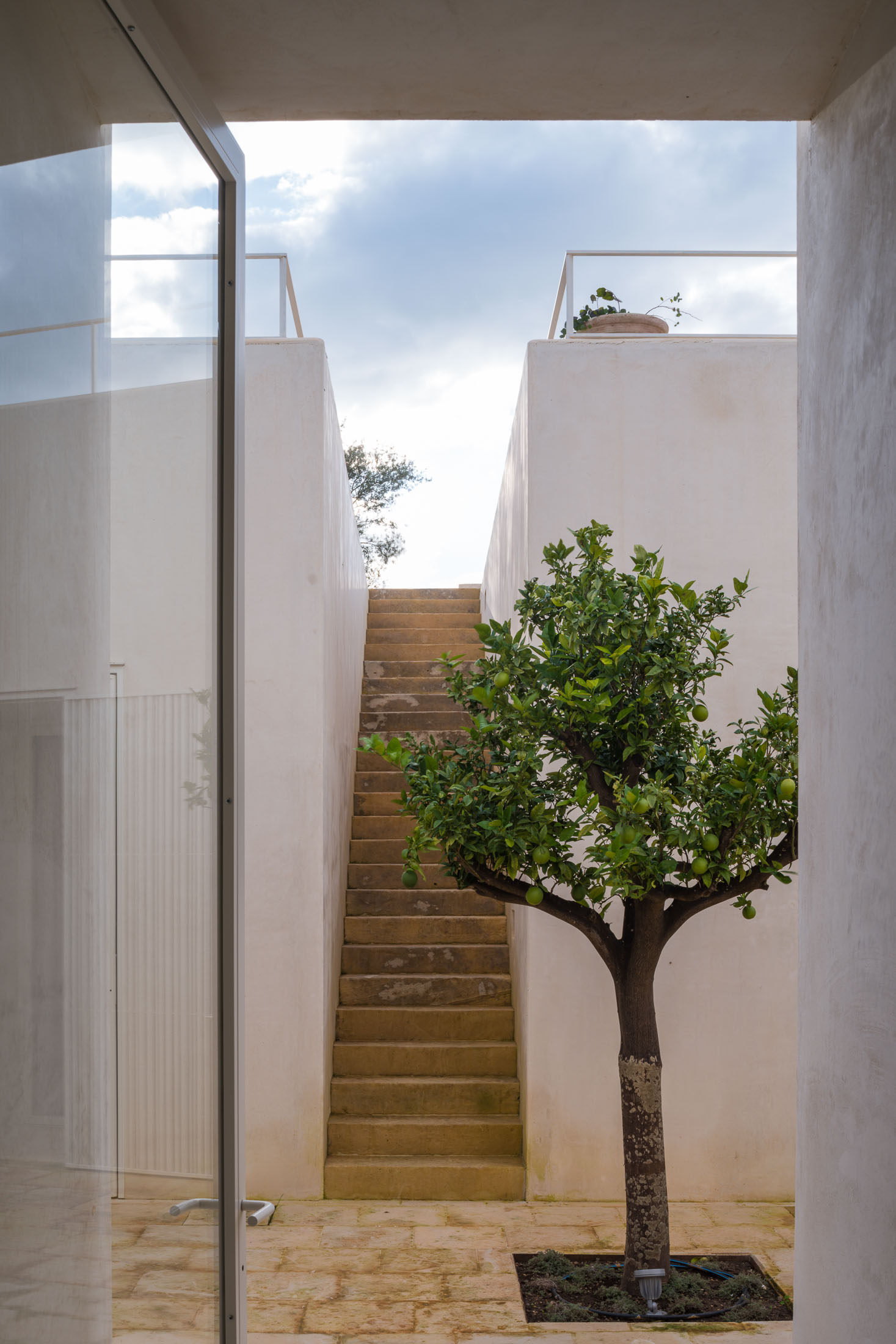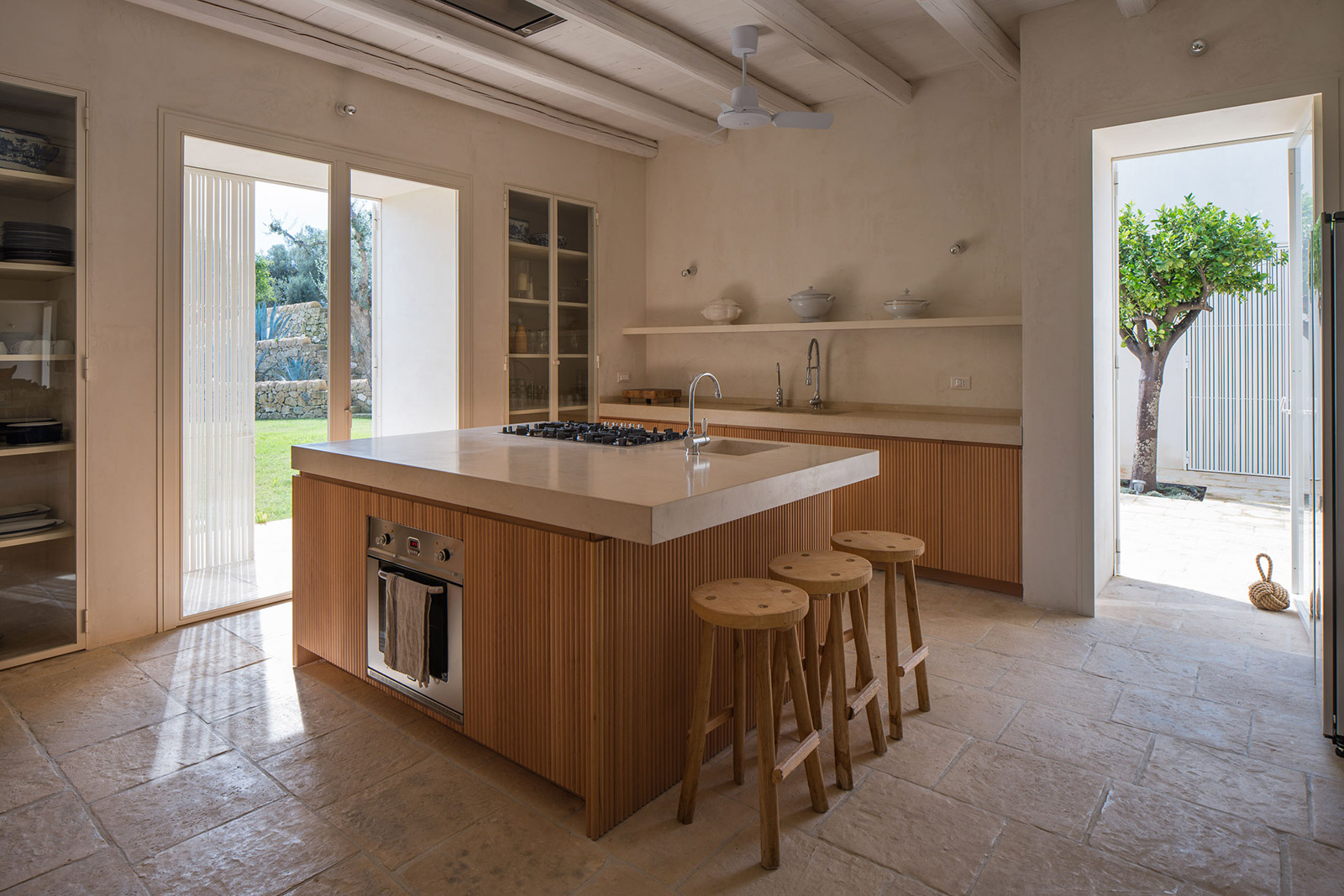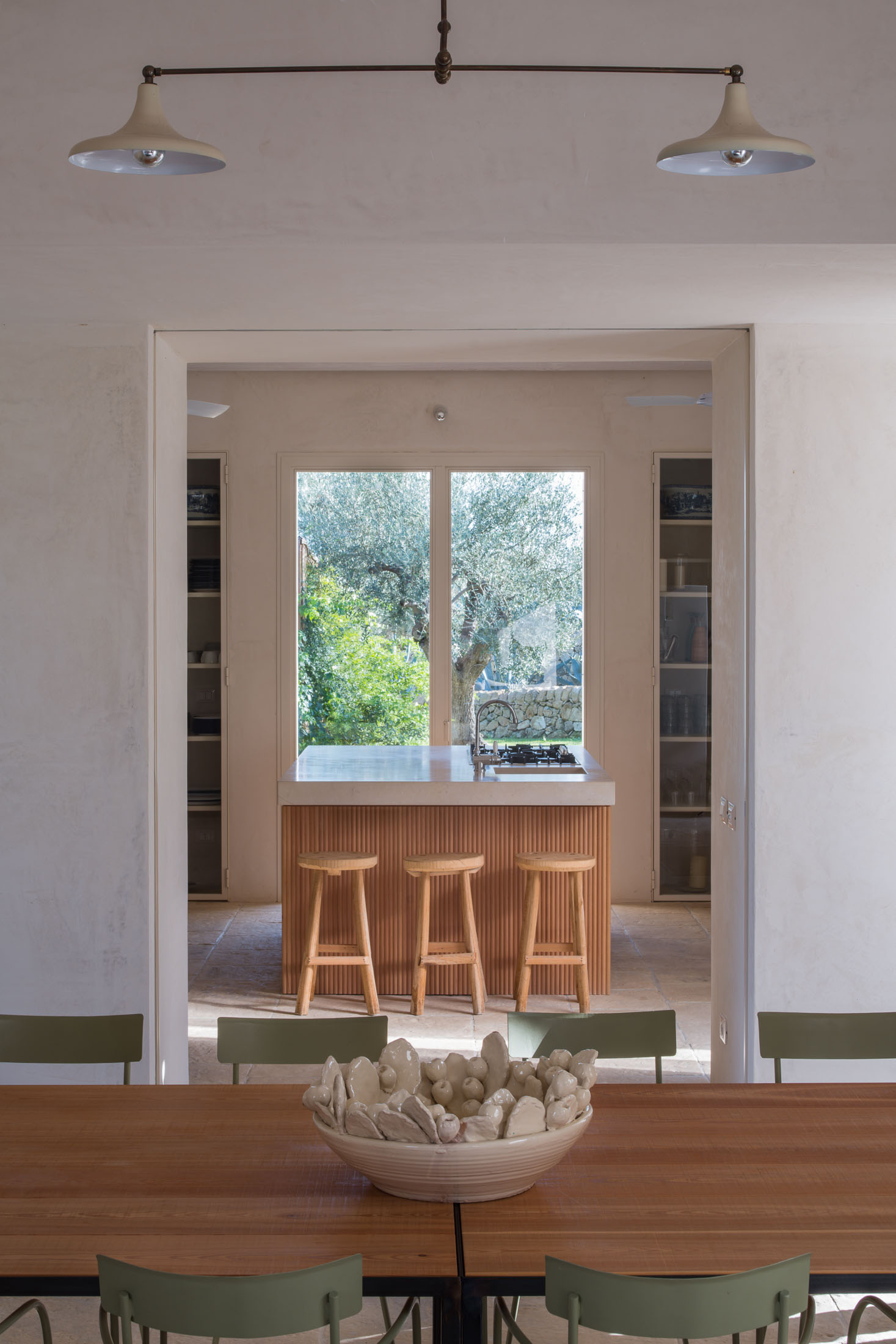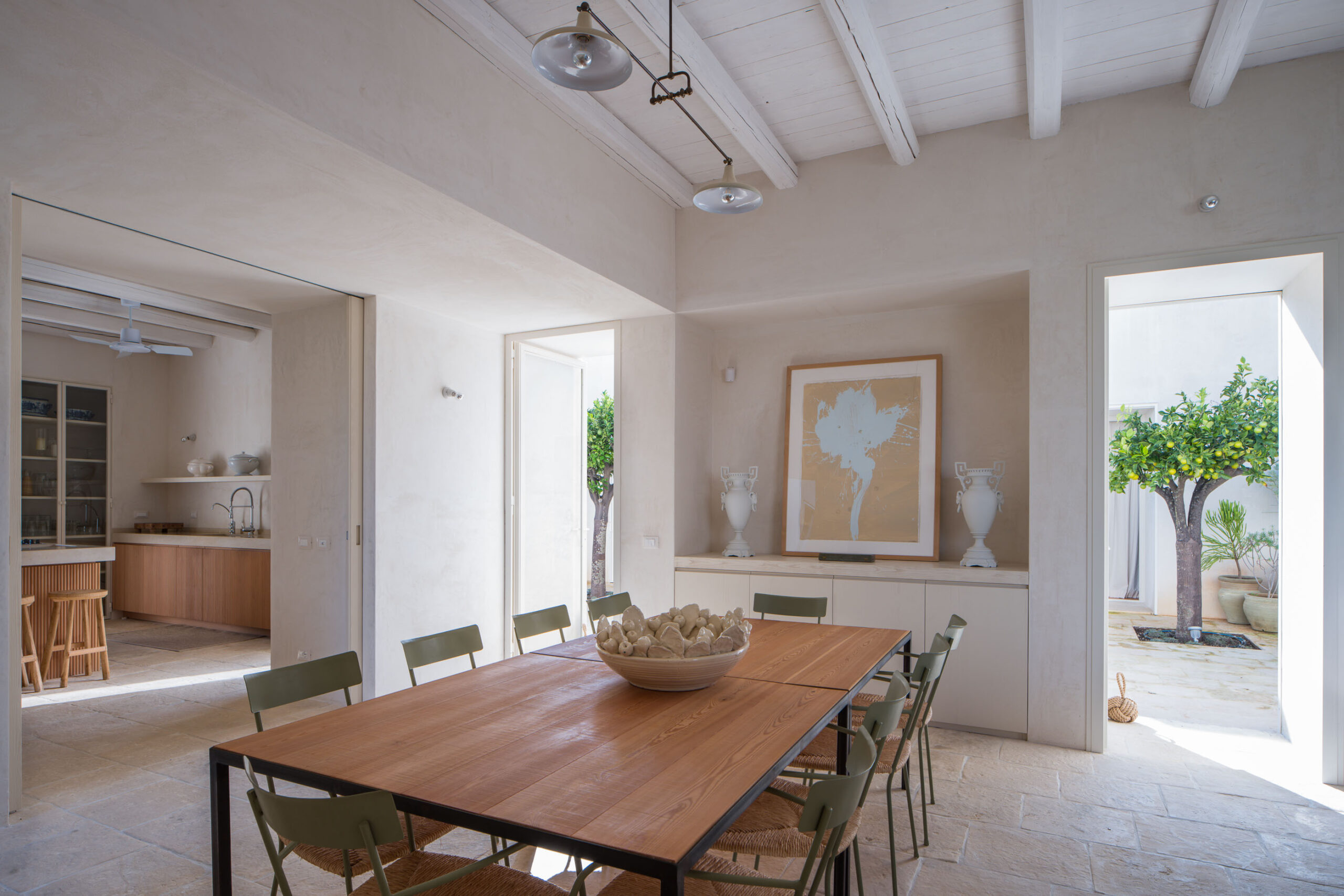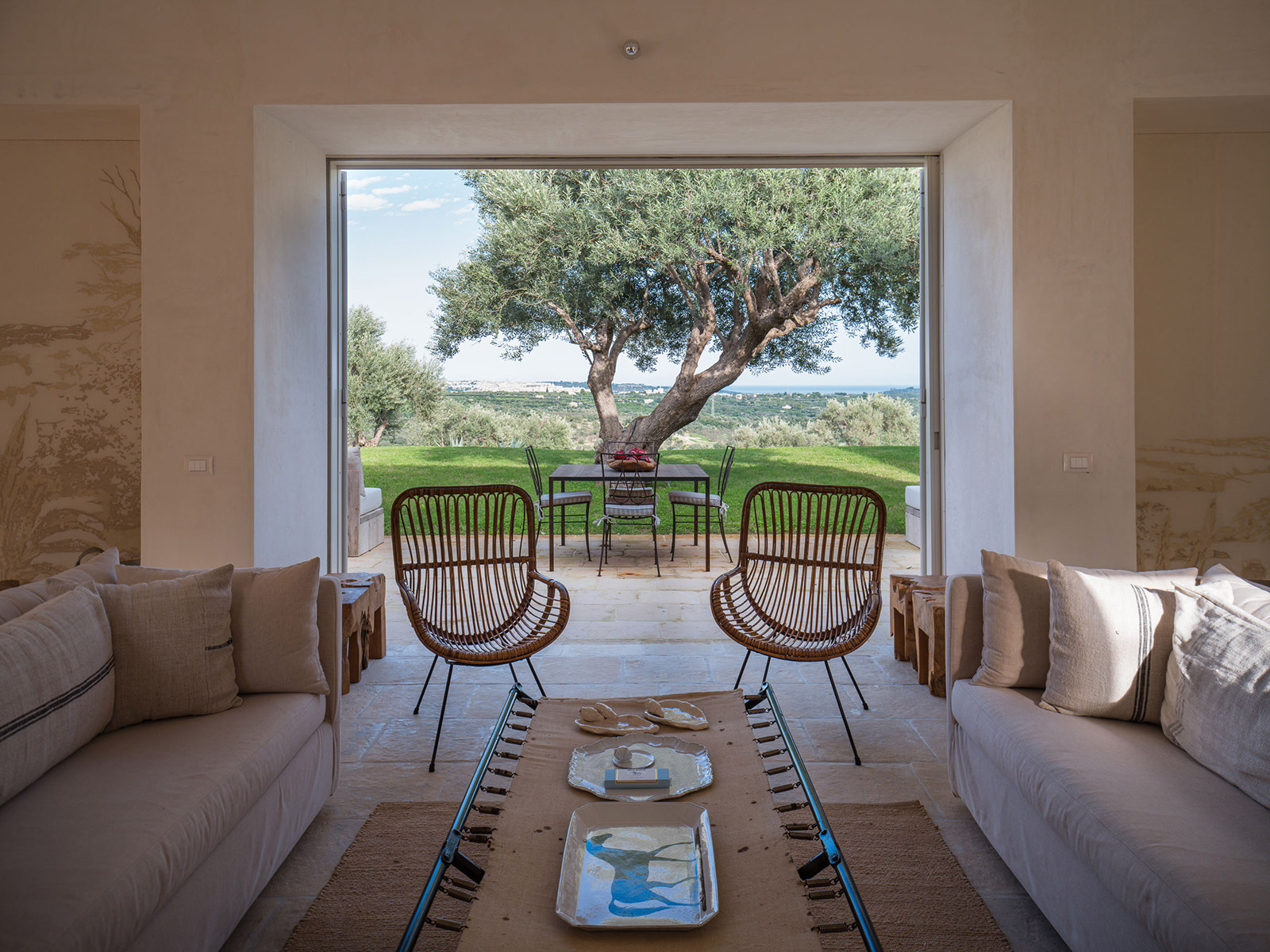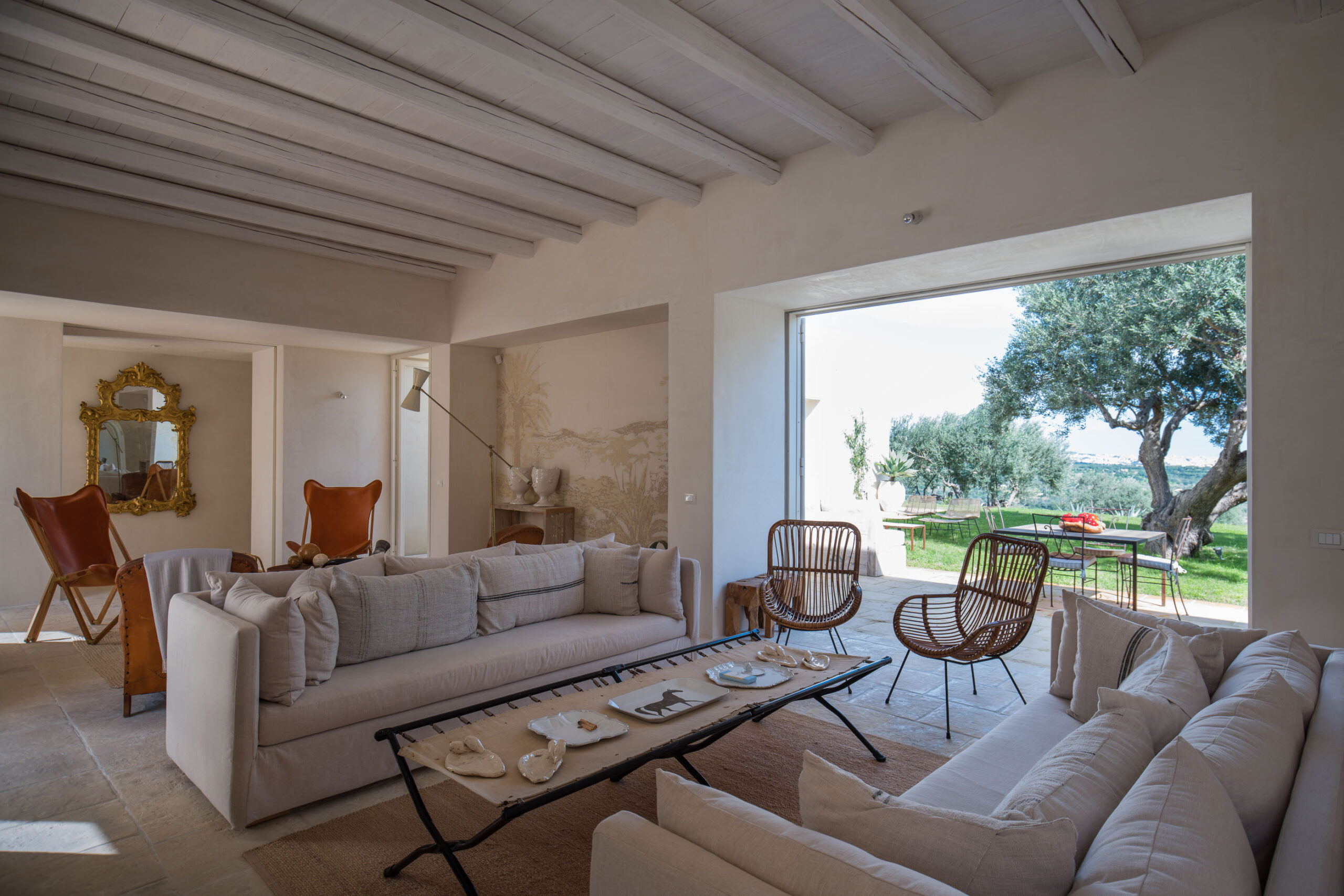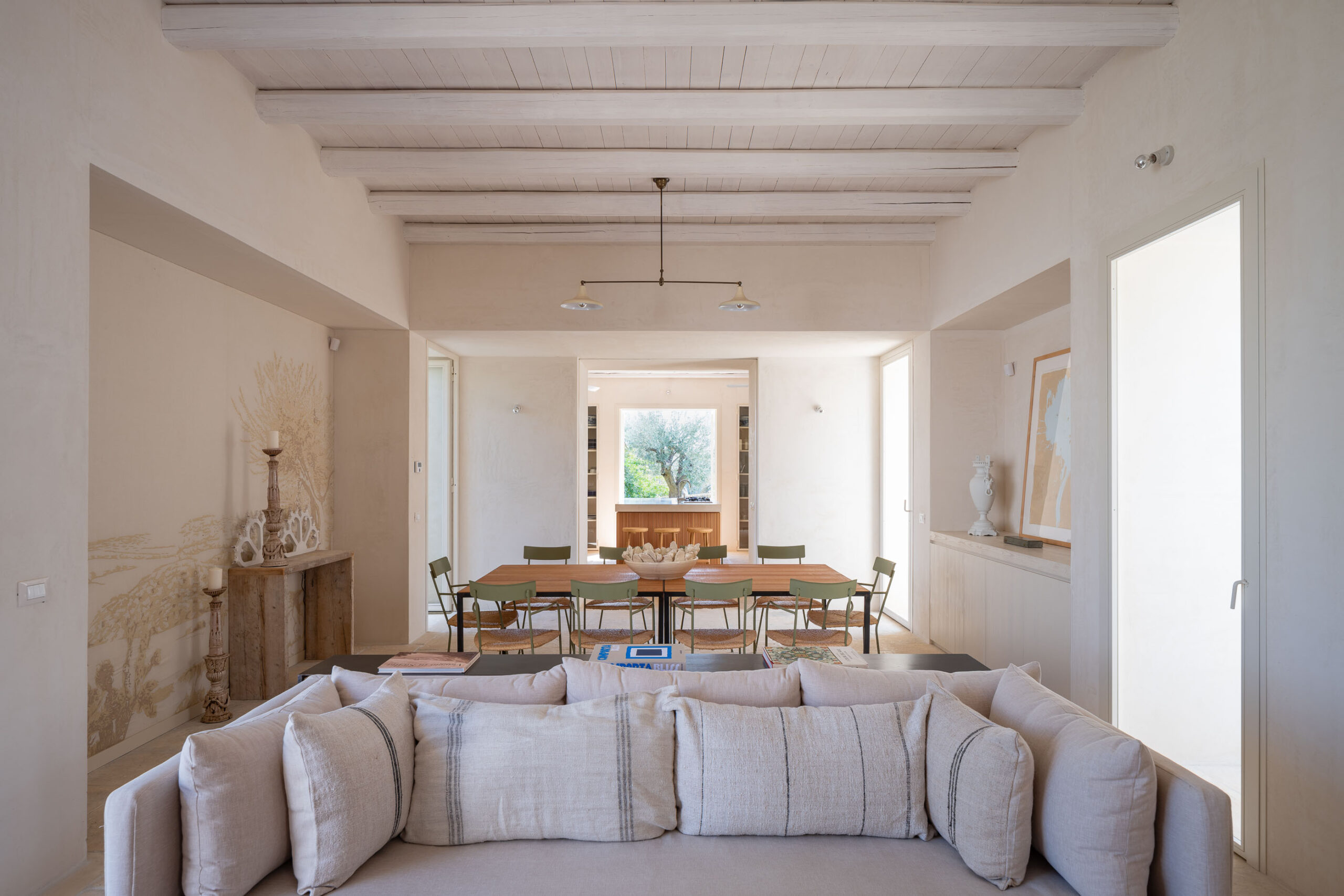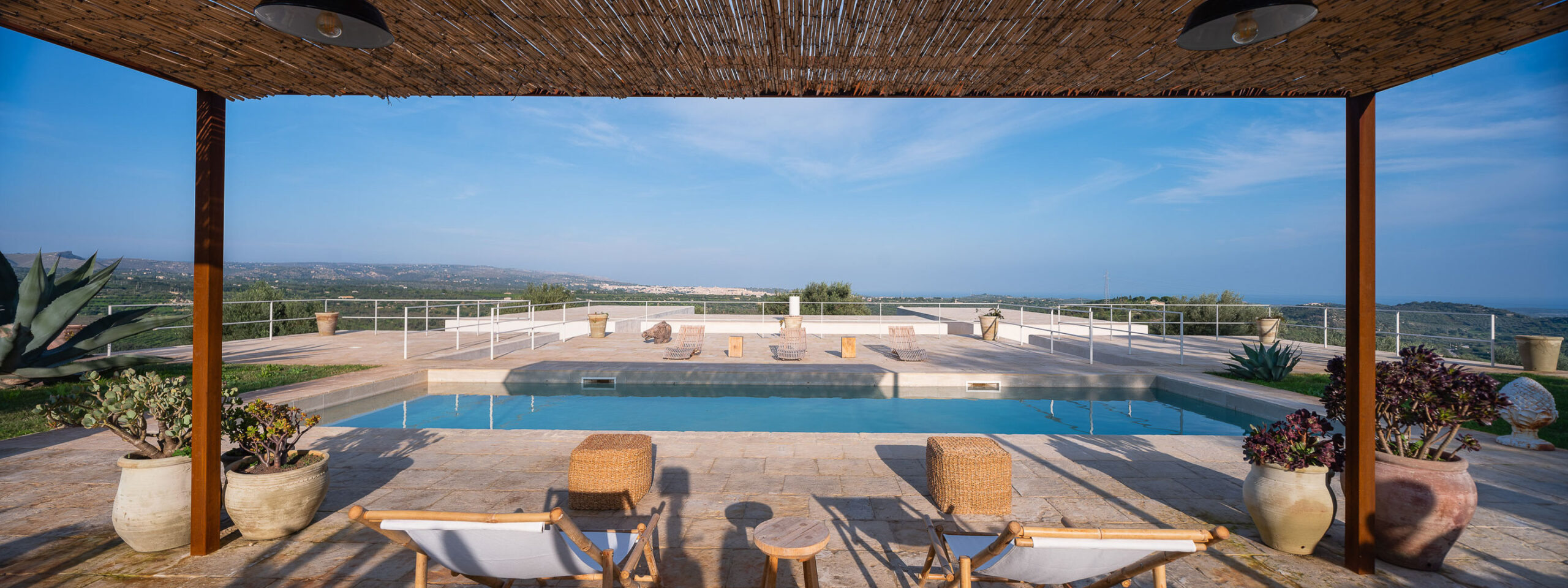Copertina
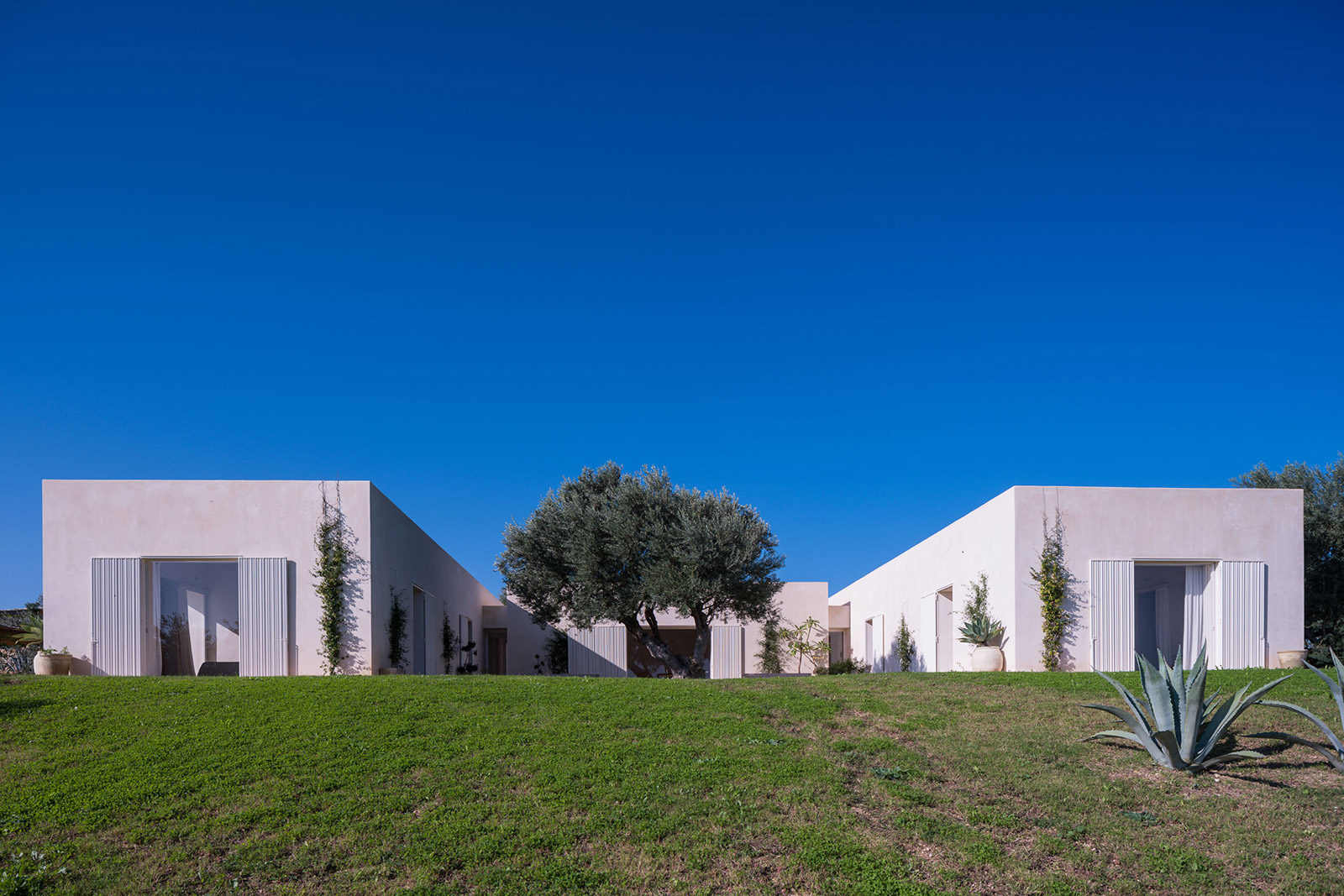
I picciotti, Noto
A new house overlooks Noto and, as far as the eye can see, an expansive and enchanting landscape of sea, mountains, and countryside. “I Picciotti” arises from the collaboration between Marco Bevilacqua, Corrado Papa, and Fabio Salini, the owner and an important reference figure for aesthetic choices. The new construction, perched atop the hill and dominating the landscape, consists of a few simple, one-story volumes arranged and geometrically connected along three main axes.
Two cypress trees frame an elevated stone path that leads us to the house, flanking the long terraces of dry-stone walls that characterize the property. The architecture follows an introspective layout with a central courtyard, typical of the “Baglio Siciliano,” surrounding a centuries-old olive tree nicknamed “Rimanilo,” reflecting the desire to leave it in its original place.
The living room and bedrooms overlook the courtyard and the olive tree, strategically facing the city of Noto, framed by breathtaking views from every window. The outbuilding, partially excavated into the ground, is constructed behind the main structure; the resulting empty space creates a pathway to the house that evokes the spirit of a country road. This atmosphere is emphasized by the rhythmic planting of orange trees, named “I picciotti,” which give the property its name. Further up the hill, hidden and sheltered on the roof of the outbuilding, we find the swimming pool, from which one can admire Noto and the Vendicari sea.
The path, like the entire house, is marked by tall and narrow openings, set into the deep solid walls, almost protecting the interior from the sun and prying eyes. These openings, aligned along the house’s main axes, allow views to traverse the structure and reconnect with the surrounding nature, emphasizing the complete integration of the building with the landscape that hosts it. Few and natural materials are used: hand-worked Noto stone for the floors, sand-colored plaster for the internal and external walls, and iron for frames and grates that simulate solid reeds to fulfill their shading and security functions.
Likewise, the furnishings of the interior spaces consist of a few antique pieces, strictly sourced from the Sicilian territory, and natural materials such as leather, wood, and linen, inspired by the clayey land and the underground stone, aimed at reinforcing the harmony between the house and nature, with a desire to create a delicate yet solid balance.
CREDITI
Photo: Alberto Ferrero
